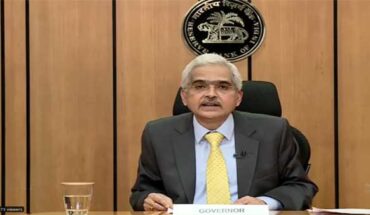Australia, India, Japan and the United States came together for the Quadrilateral Security Dialogue (QSD) popularly known as the ‘Quad’ for which the dialogue was initiated way back in 2007 but it ceased to exist in 2008 after the withdrawal of Australia. In 2017, these four countries agreed to revive the quadrilateral alliance. Besides cooperating in Security and other areas such as ‘climate’, ‘critical and emerging technology’, participating countries launched the senior-level Quad Vaccine Experts Group. In this background, Australia is an important partner of India. From April 2000 to September 2023, Australia occupied the 26th position in the Foreign Direct Investment (FDI) equity inflows into India. Cumulative FDI inflows during this period stood at US $1.38 billion. Trade also reflects this partnership as in FY23, Australia was India’s 13th largest trading partner, and India was Australia’s 9th largest trading partner.
The bilateral trade between India and Australia stood at US $24 billion in 2023-24. It was about 7.7 per cent less in 2023-24 as compared to US $26 billion in 2022-23. So far as pharmaceutical market is concerned, Australia had a market size of about US $14.6 billion by January 2023, out of which about 12 per cent was generic, and Over the Counter (OTC) products constituted 18 per cent market share. With major share of branded pharmaceutical products in Australia, treatment cost automatically goes up, thereby offering an opportunity for high quality generic drugs. In 2020-21, Australia accounted for 1.63 per cent of India’s outbound pharmaceutical shipments, with exports of US $316 million. During April-November 2023, drugs and pharmaceuticals export from India was US $305 million. India has been pressing for preferential market access for drugs and pharmaceutical products, and had sought faster and easier approvals for generic pharmaceutical products from India which have already been approved by the drug regulators from five developed countries namely, the U.S. Food and Drug Administration (USFDA) from the US, European Medicines Agency (EMA) from the European Union, Medicines and Healthcare Products Regulatory Agency (MHRA), United Kingdom, Japan Pharmaceuticals and Medical Devices Agency (PMDA) and Health Canada.
India-Australia Economic Cooperation and Trade Agreement (Ind-Aus ECTA) came into force on December 29, 2022. This became India’s first trade agreement with a developed country in more than a decade. The stated objectives of the agreement are to establish a framework for strengthening and enhancing the economic, trade and investment relationship between two countries, liberalize and promote trade in goods, liberalize and promote trade in services, and improve the efficiency and competitiveness of their manufacturing and service sectors and to expand trade and investment between two countries besides facilitating, enhancing and exploring new areas of economic cooperation. A Joint Committee as envisaged through Article 1 (k) has been formed. As per Article 2.12, a Subcommittee on Trade in Goods has been established. Chapter 7 of the Agreement deals with Technical Barriers to Trade (TBT) with the objective to facilitate trade in goods by ensuring that standards, technical regulations, and conformity assessment procedures do not create unnecessary obstacles to international trade between the parties, and to furthering cooperation on matters related to the TBT Agreement, promoting mutual understanding of each party’s standards, technical regulations and conformity assessment procedures, and facilitation of information exchange and cooperation, and addressing the issues that may arise.
Annexure 7A is exclusively dedicated to Pharmaceuticals through which the parties’ Therapeutic Goods Regulators shall work together to facilitate trade in human prescription medicines and medical devices. Human prescription medicines include prescription generic and biosimilar medicines, and medical devices. Further, it has been agreed that to facilitate pharmaceutical trade, regulatory bodies may utilize Good manufacturing Practice (GMP) inspection reports from regulatory authorities recognized by that Party’s Therapeutic Goods Regulator as a comparable regulator. The Central Drugs Standard Control Organisation (CDSCO) and the Therapeutic Goods Administration (TGA) of Australia is ‘Therapeutic Goods Regulator’ in India and Australia respectively. This is expected to reduce the ‘requirement for’, or ‘duration of’, in-country inspections in the territory of the other party.
From the Day One of the entry into force of the Agreement, selected Pharmaceutical products and medical devices along with many products from other sectors (totalling 96.4 per cent value of India’s exports to Australia) got immediate market access @Zero duty which were subjected to import duty of 4-5 per cent by Australia earlier thereby offering immediate duty-free access for pharmaceutical products from India. India kept 29.8 per cent of its tariff lines under exclusion list that comprise ‘most medical devices’ along with items primarily from agricultural sector. Other gains expected from the agreement included ‘fast track approval for patented, generic and biosimilar medicines using the Comparable Overseas Regulator pathway’, and ‘fast track quality assessment/inspections of manufacturing facilities similarly’.
It was expected that due to Ind-Aus ECTA, there will not be any significant shift in pharmaceutical exports from India to Australia in near future as certain studies (e.g., Kim Sweeny in September 2005) have shown that the price setting mechanism of publicly-funded Pharmaceutical Benefits Scheme (PBS) in Australia, acts to “limit the disparity between patent-protected and off-patent drugs’ prices”. Further, studies also showed that when PBS drugs go off-patent, generic suppliers do not “seem to gain market share to the same extent” as in other countries. Therefore, the PBS pricing system does not result in much difference between the price of originator and generic brands. Ravi Udaya Bhaskar, Director General of Pharmaceuticals Export Promotion Council of India (Pharmexcil) also expressed the same opinion in one of his interaction in January 2023.
Due to Ind-Aus ECTA agreement and resultant fast track approvals, it was definitely expected that the move will infuse confidence in other countries. Moreover, countries like New Zealand, Fiji and Papua New Guinea are likely to take a positive view on Indian pharmaceutical products as Australia is a key market in the Oceania region. Sector-wise Indian exports to Australia on preferential lines showed that ‘the highest percentage increase’ was recorded in drugs and pharmaceutical products. In the first seven months of the FY24, i.e., during April-October 2023, 52 per cent rise in exports was recorded in case of drugs and pharmaceutical products given the fact that Ind-Aus ECTA came into effect on December 29, 2022.
On April 29, 2024, the first Joint Committee Meeting (JCM) was held in Canberra under Ind-Aus ECTA where Indian delegation was led by Indian Commerce Secretary and Australian delegation was led by the Deputy Secretary from the Department of Foreign Affairs and Trade (DFAT), Australia. Both parties agreed to have timely resolution of market access issues. This is in line with Australian strategy expressed in the report titled, ‘An India Economic Strategy to 2035: Navigating from potential to delivery’ submitted to the Australian Government by Peter N. Varghese in April 2018 in which it was recommended that Australia should strive by 2035 to lift India into its top three export markets, to make India the third largest destination in Asia for Australian outward investment, and to bring India into the inner circle of Australia’s strategic partnerships, and with people to people ties as close as any in Asia. Advocated strategy identified 90 specific recommendations. The report emphasized on the scope for Australian businesses in India across healthcare space. It also highlighted opportunities such as near term ‘import of generics’ from India, ‘export of complementary medicines to India’, and ‘export to India, including joint production for third markets’. It also noted that Australia has a reputation for quality but represents only 1 per cent of global pharmaceutical and medical device sales. Therefore, there is immense scope to be in an economy which is third largest in terms of Purchasing Power Parity (PPP). On medications, the report stated that ‘in 2017, Australia imported $335 million of medicaments (including veterinary) from India (7 per cent of Australia’s total imports) and exported $16 million’. It expressed optimism for Australian engagement with India’s health sector.
To conclude, Ind-Aus ECTA, has brought together two cricket-loving countries – India, the 5th largest economy, and Australia, 14th largest economy. ‘ECTA’ itself means “Unity” in Hindi. In terms of pharmaceutical exports, Indian pharmaceutical companies are likely to gain due to quicker approval of their drugs in Australia.
Dr. Anil Kumar Angrish, Associate Professor (Finance and Accounting), Department of Pharmaceutical Management, NIPER, SAS Nagar (Mohali), Punjab
Disclaimer: Views are personal and do not represent the views of the Institute.





